In this build, the PM Research Number 3 steam engine that was previously machined from a casting kit earlier in the year will be connected to a Jensen 2 1/2" electrically heated boiler. This model engine will then become a live steam engine! A PM Research dynamo, another previous machining project, will be run off a drive belt powering a small light bulb to provide a working load for the engine.
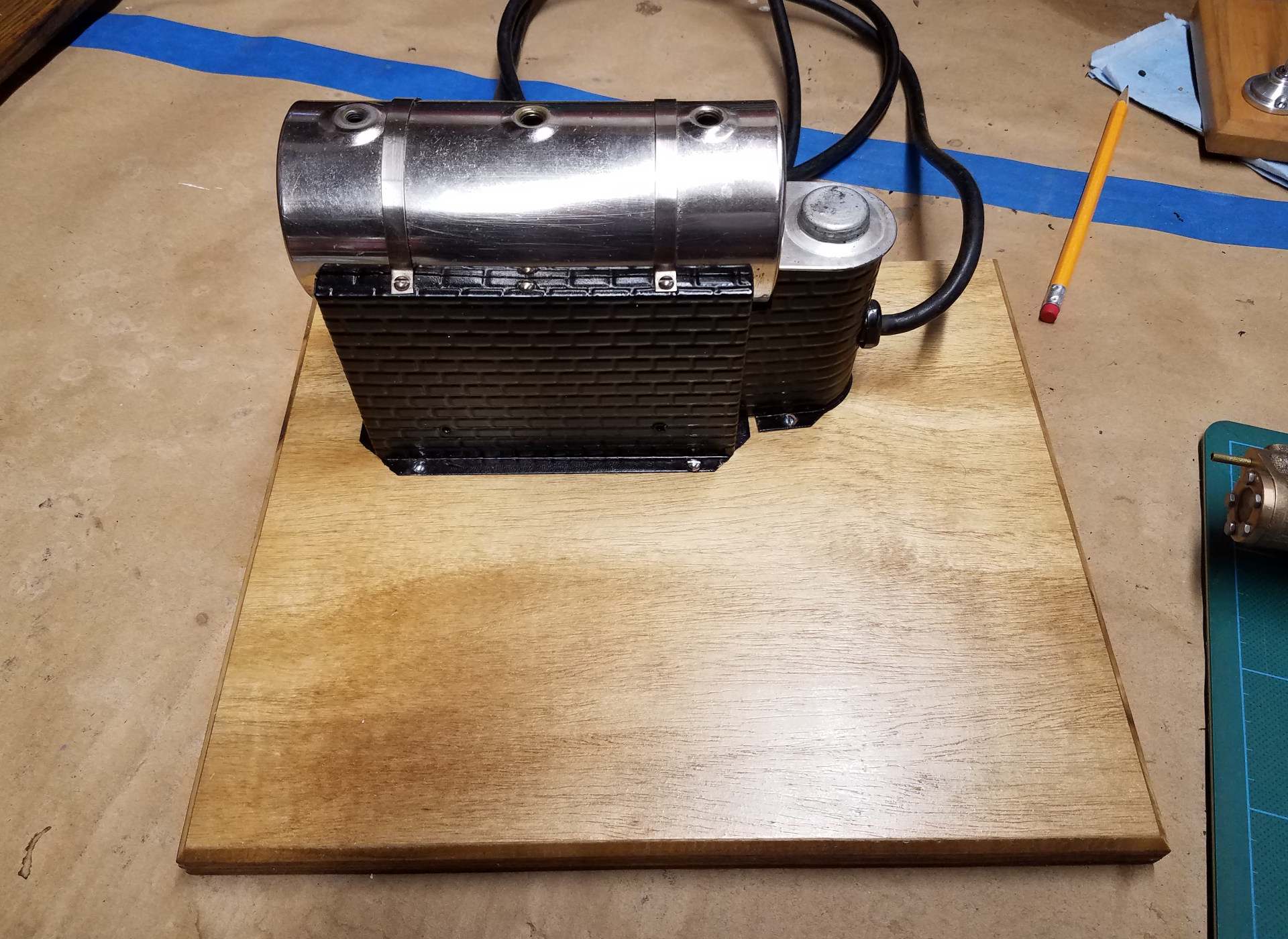
Over the years I've collected three different versions of the Jensen 25 steam engine. One of these wasn't getting much runtime anymore and since it had a restored and painted boiler assembly it seemed a waste for it not to be used somewhere. The Jensen engine this boiler powered and the PM Research (PMR) Number 3 share a similar bore and stroke so I thought this boiler would probably work well for this application.
In the picture the boiler has been attached to the prepared board. This board is solid wood, poplar I believe, but I wouldn't recommend this approach as the heat and moisture from running the boiler has started to warp the board. It would be better to use a piece of plywood like Jensen uses with some of their models.
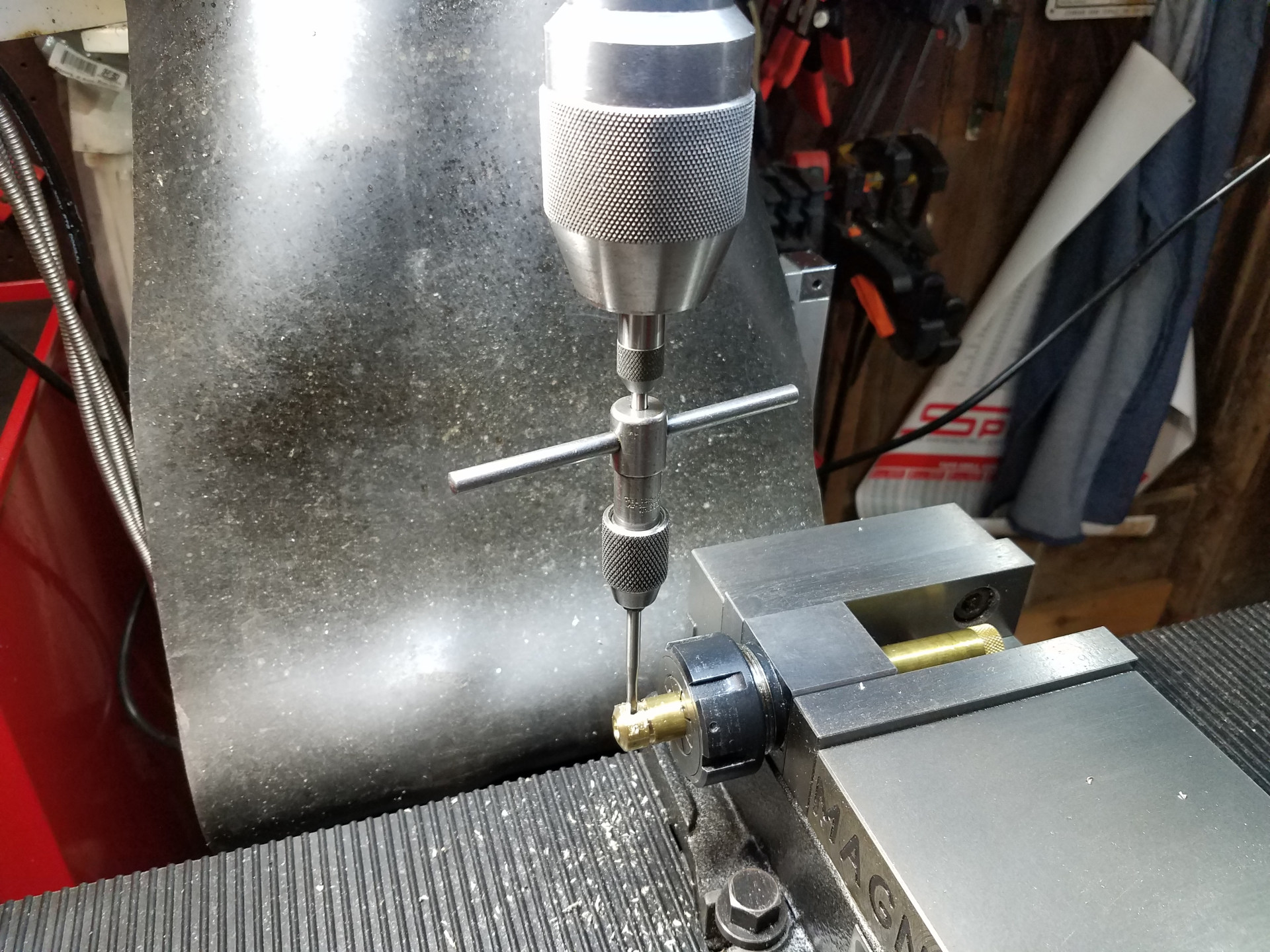
Working on the brass steam dome. None of the original Jensen parts were modified or destroyed so at a later date the boiler can be returned back to it's old home without any issues.
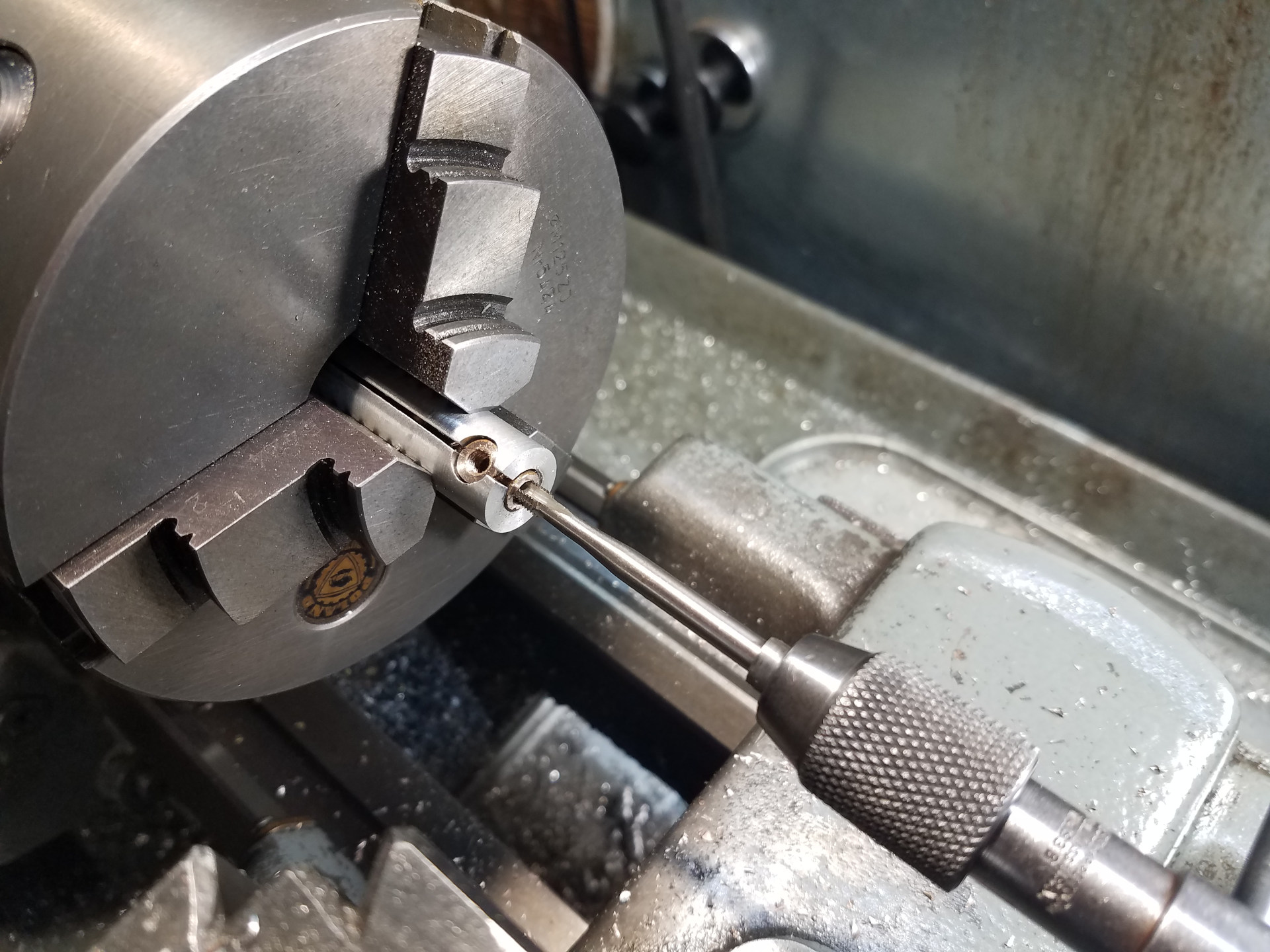
Machining and threading a cast tee fitting from PMR using a fixture held in the 3 jaw chuck in the lathe. All the steam pipe used with this engine will be brass sized at a 3/16" OD.
In model engineering, there are several different thread types and forms used for steam fittings. Not to be outdone, PMR developed their own thread form, Universal Straight and Taper (UST) that can be adapted to use with both tapered and straight threaded fittings. With all these choices model pipe threading can quickly become confusing.
For pipe and pipe fitting threading, I decided to go with the 3/16-40 MTP thread standard. MTP (Model Taper Pipe) is a tapered pipe thread and is an extension of the US NPT pipe thread system. In fact, the largest MPT thread, 5/16-27, is exactly the same as the smallest NPT thread, 1/16-27.
In England, this thread form is called METP. I bought all my model pipe taps and dies from the Tap & Die Co in London as even with the additional cost of international postage they were a good bit cheaper than buying the tooling local.
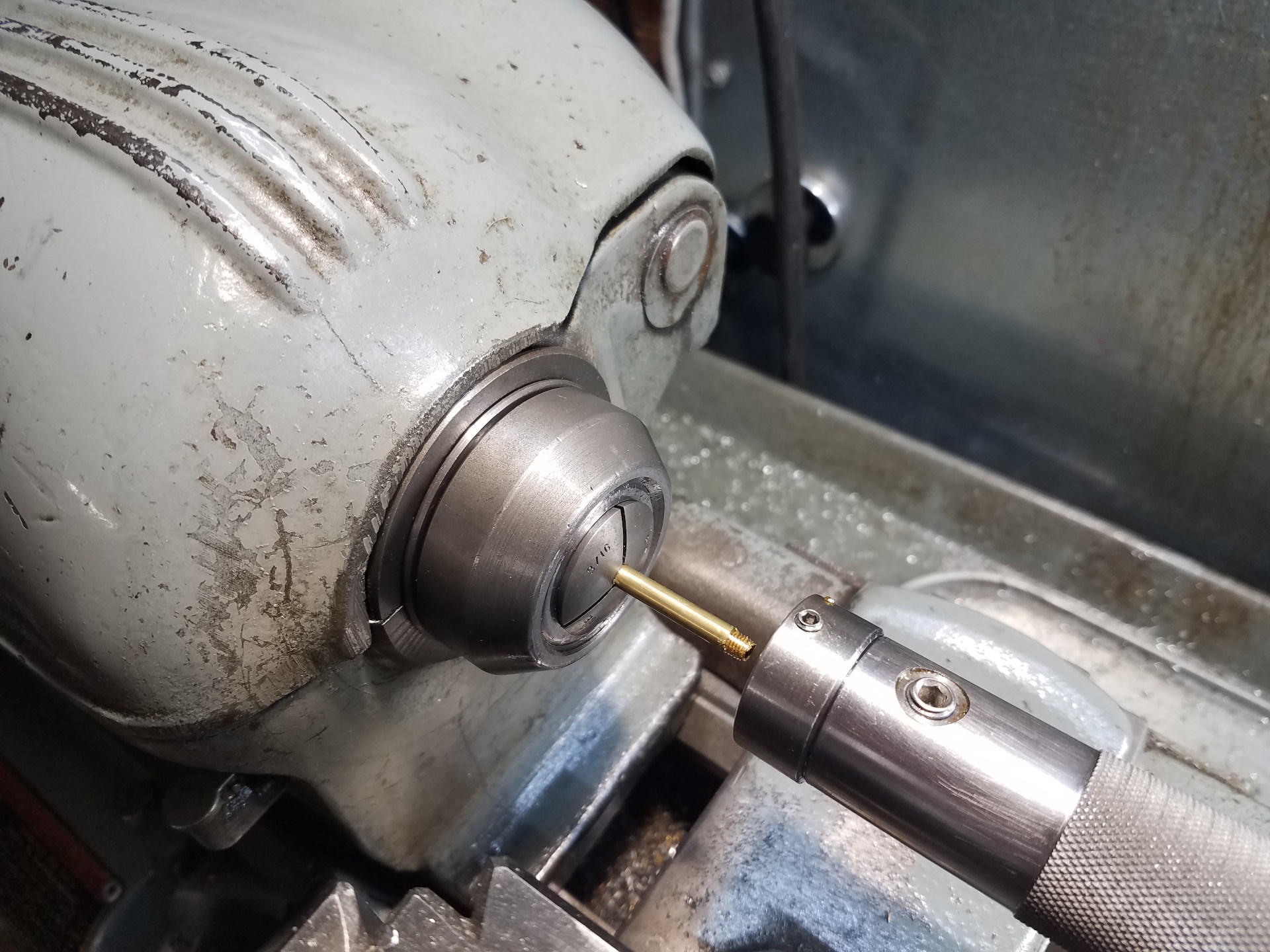
Threading the end of one of the brass pipes with a die to 3/16-40 MTP. Collets work well for work holding as they don't mar the pipe.
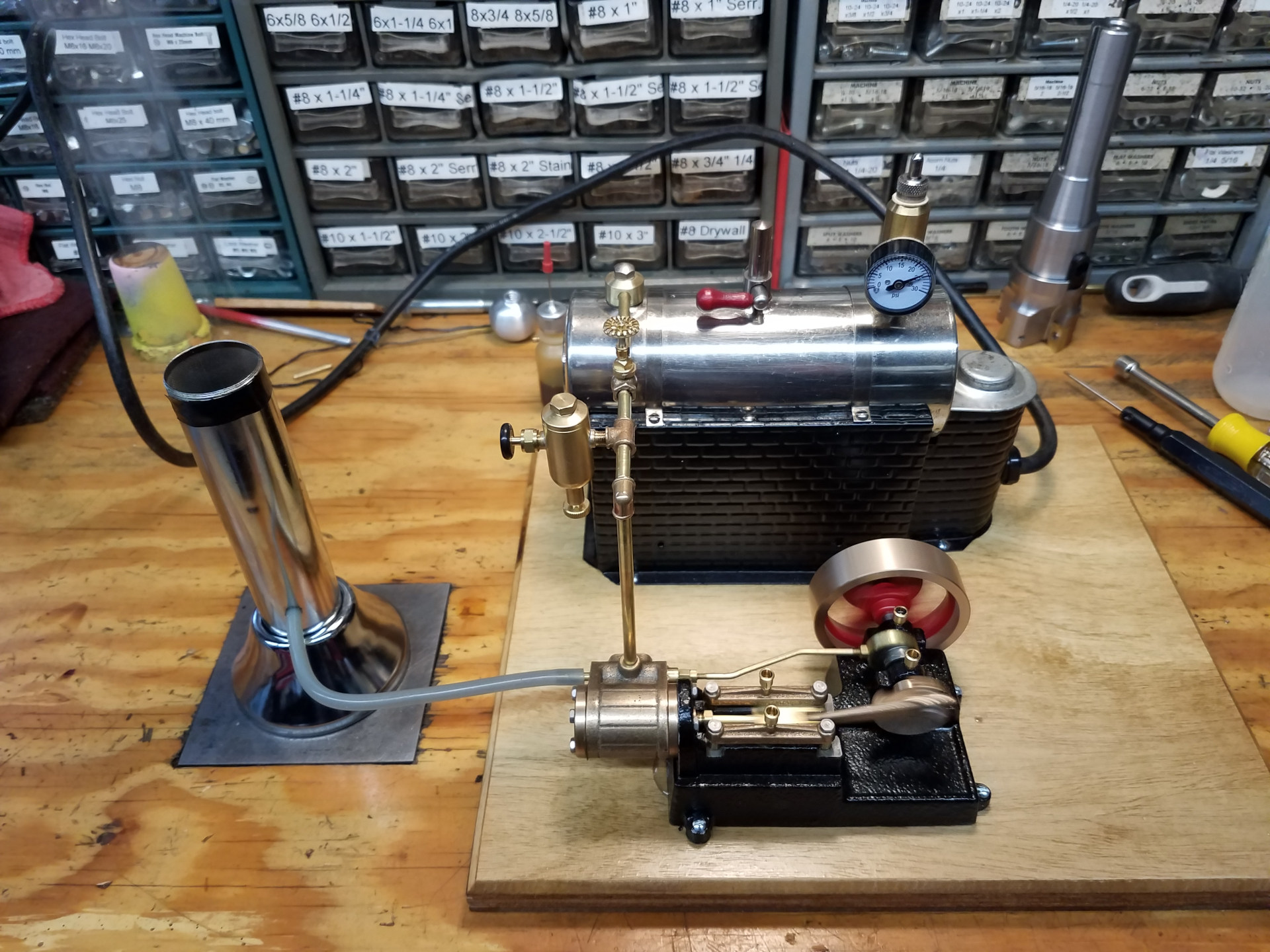
The first test run on steam of the PMR Number 3 engine. Notice a PMR displacement oiler and a pre-machined PMR globe valve for throttle control.
The boiler drove the engine easily. In fact, it produced so much steam that a Dremel speed controller was needed to lower the heat in the boiler so the pressure relief valve wasn't constantly blowing.
Since plenty of steam was available, it was decided to mount a previously machined PMR Dynamo and light to provide a work load for the engine.

The handle provided with the pre-machined PMR globe valve is wonderful but I decided to set it aside and make one that matches the handle on the displacement oiler. The rubber o-ring in the new handle also provides some welcome heat insulation when adjusting the engine speed.
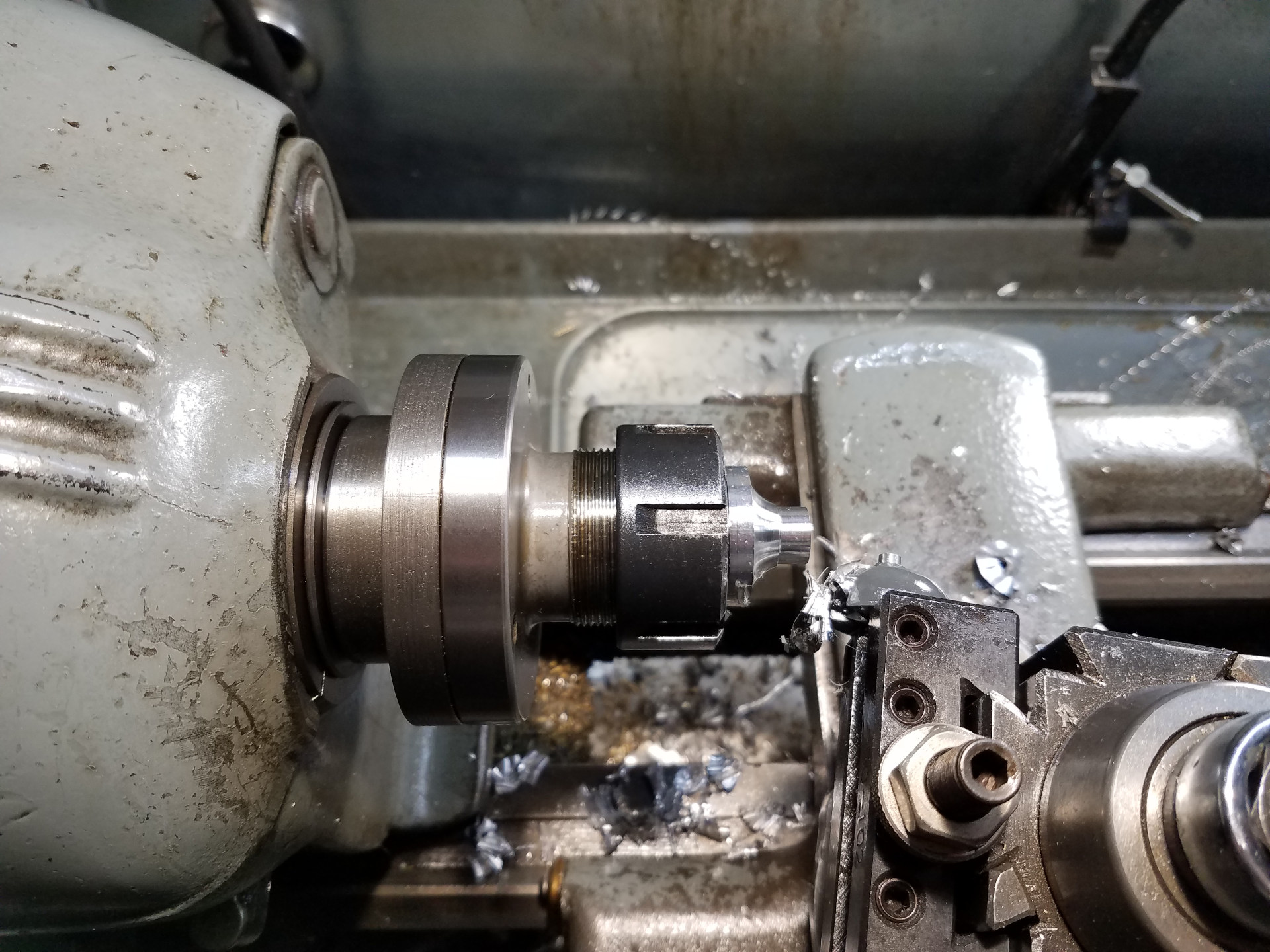
Started working on a base for the Jensen lamp pole. Here a wood router bit is used to cut a large radius in the lamp base.
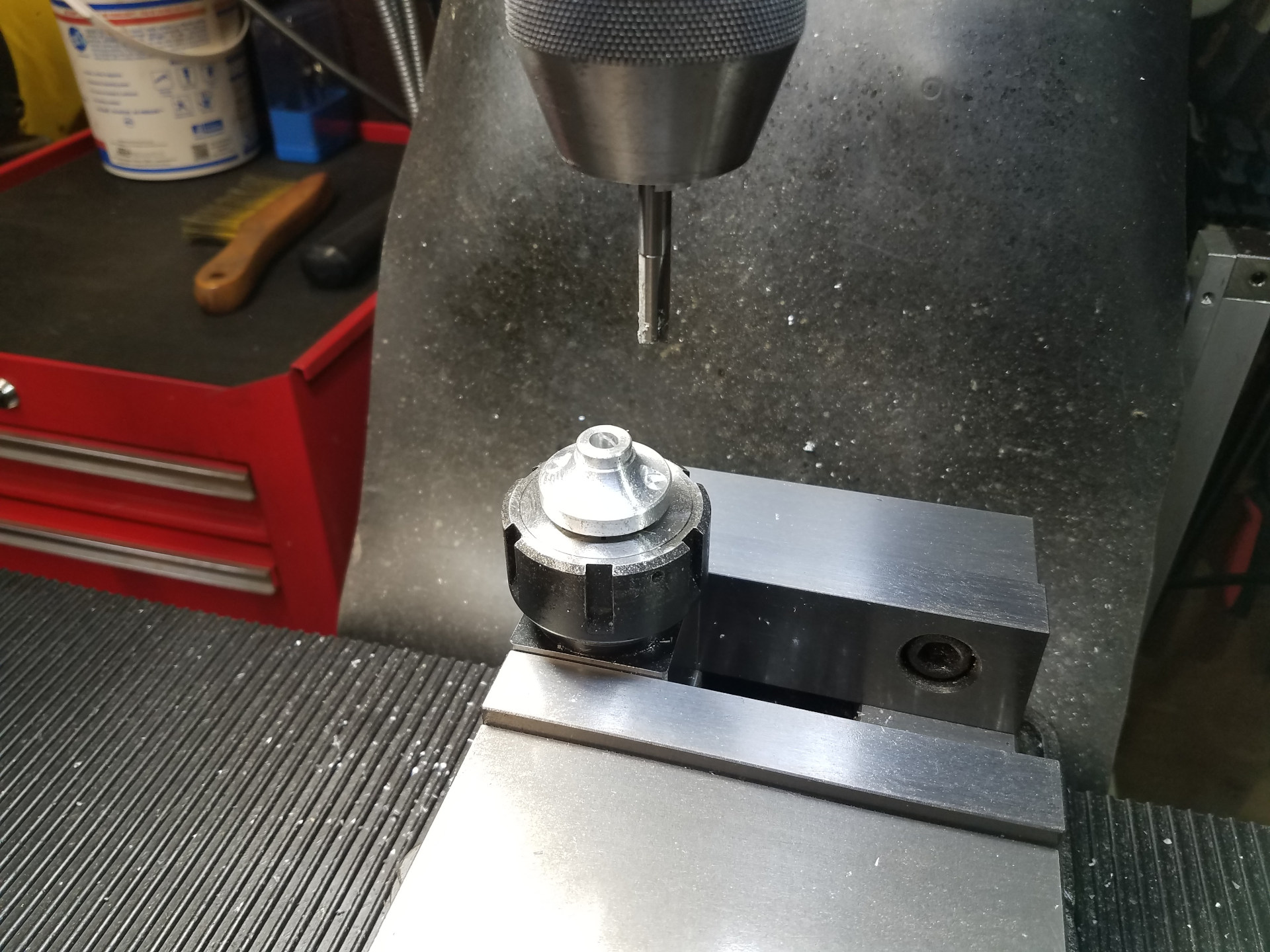
The lamp base gets some work done at the mill for the mounting holes.
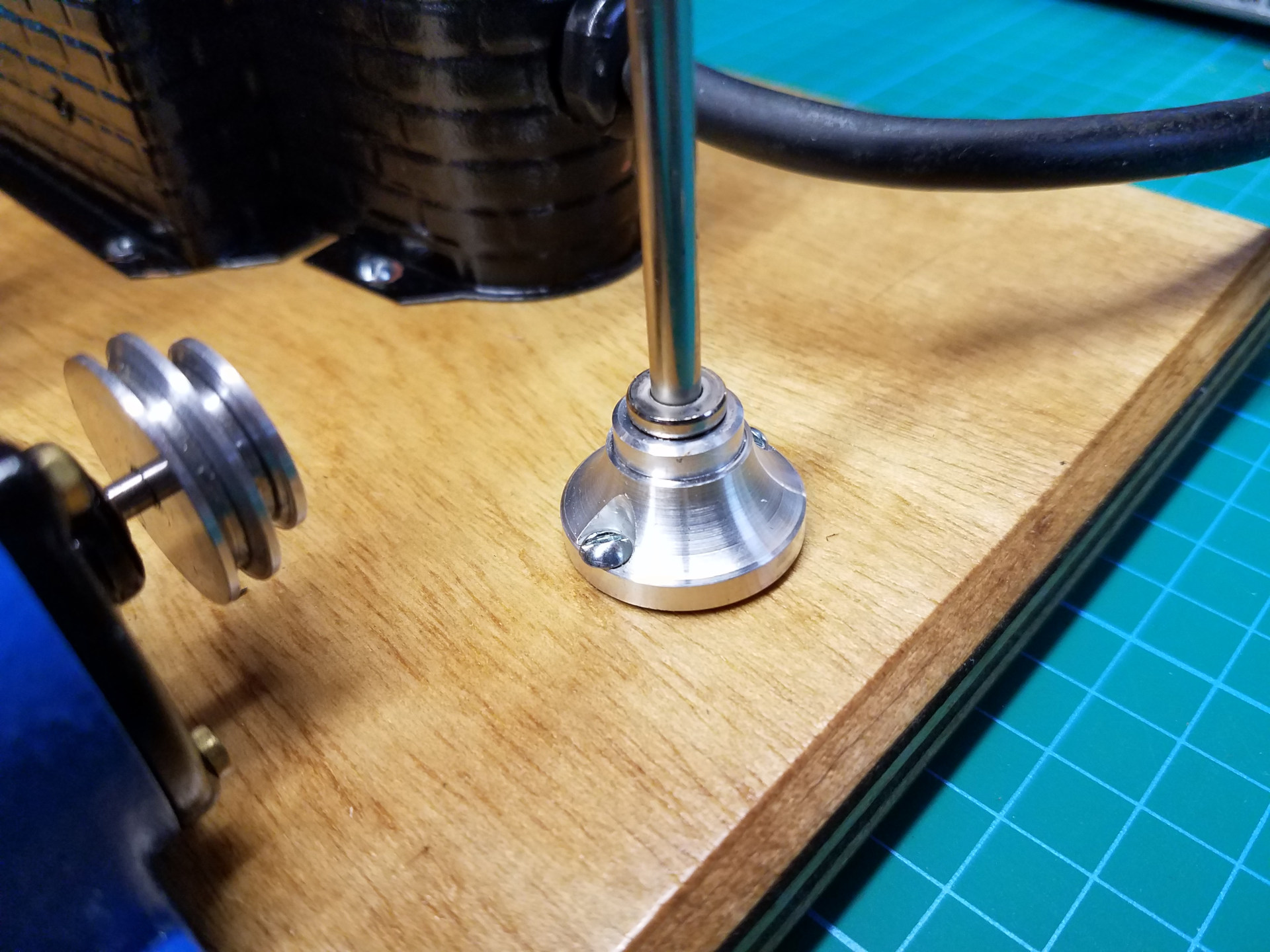
The completed lamp base attached to the board.
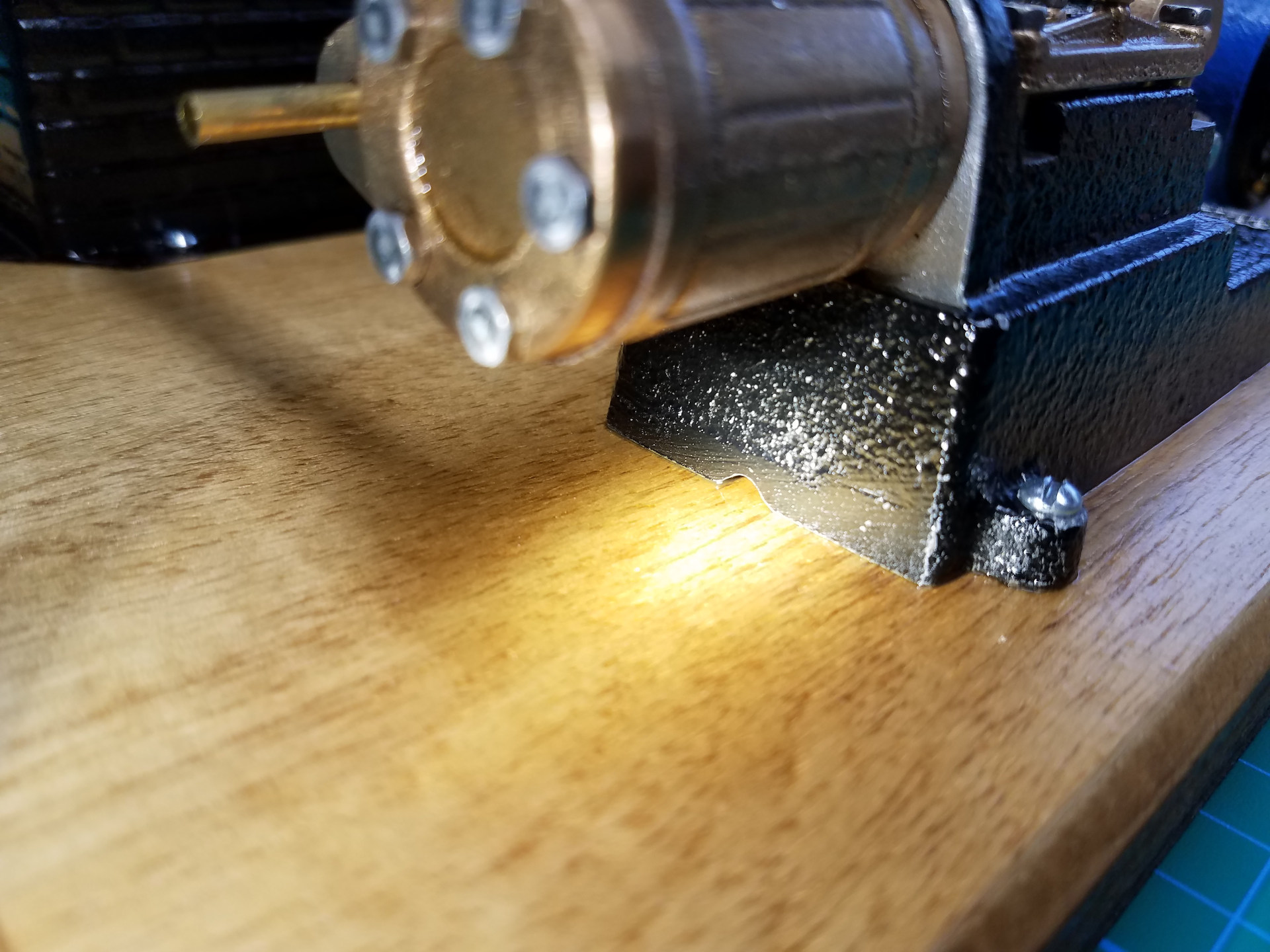
When running the engine water would accumulate inside the base which was difficult to remove. A small passage-way was milled into the bottom of the engine base to allow the trapped water to escape by tilting the board.
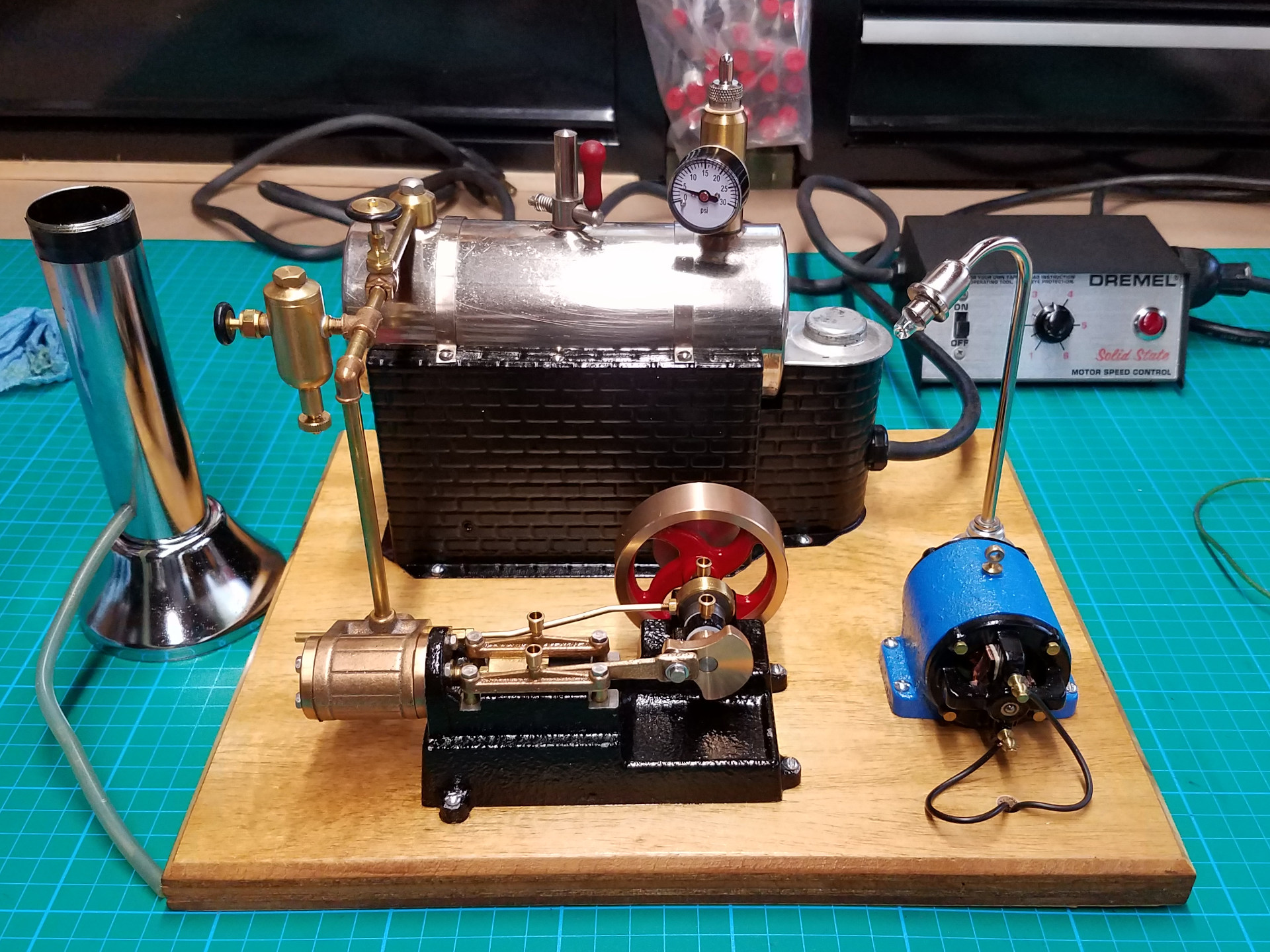
The completed steam engine, boiler and dynamo.
A short video of the PM Research Number 3 running on steam and powering the dynamo.
Overall, I'm pleased with how the project finished. The borrowed Jensen boiler has zero problems steaming the engine even when running a workload with the dynamo. The dynamo is a bit large for this size of engine, but the PM Number 3 still manages to drive it well enough to make the bulb shine with a pleasing amount of light.